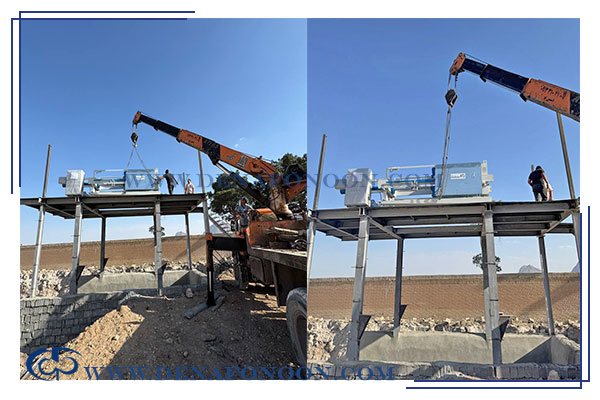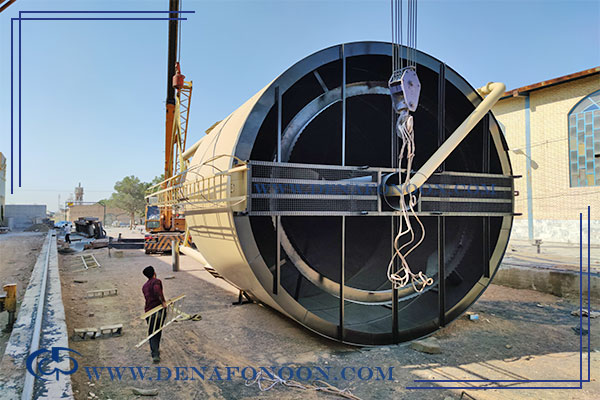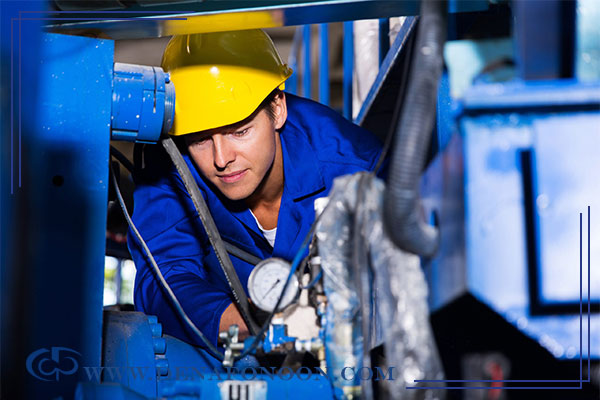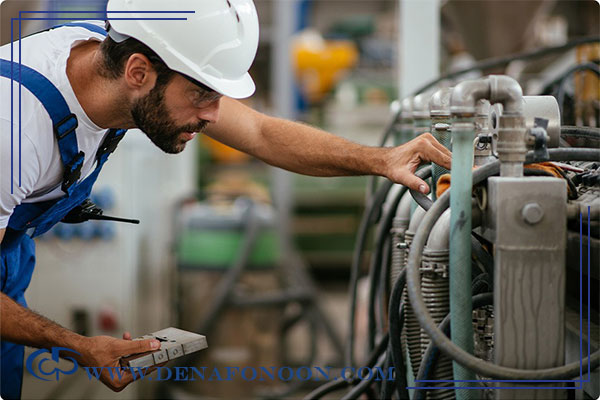Installation and Commissioning of Filter Press
Installation and Commissioning of Filter Press
VisitCount 17
Comprehensive Guide to Installation and Commissioning of Filter Press

As you know, a wastewater treatment system consists of several components, each with its own principles for installation and commissioning. Below, we provide a comprehensive guide to the installation and commissioning of a filter press.
The main stages of filter press installation and the wastewater treatment unit are as follows:
- Site preparation
- Equipment preparation
- Filter press installation
- Pipeline design and connection
- Performance testing
- Operator training
- Periodic maintenance
1. Site Preparation
The first step in installing and commissioning a filter press is preparing the installation site at the client’s facility. For this purpose, the installation team must first visit the site and obtain a layout plan of the factory from the client.
This step is carried out to review and inspect the arrangement of production line equipment. Based on the factory layout and machinery arrangement, the appropriate location for installing the filter press is determined.
Key factors in choosing the installation site include:
- Sequence and circulation of water in the production line
- Arrangement of production equipment in accordance with water flow
- Collection of supply pipelines and return channels (wastewater channels) into a common basin or tank
- Accessibility and ease of filter cake discharge
2. Equipment Preparation

For the clarifier tank and clean water tank, it is essential that they are installed perfectly vertical and level. The tank supports must be fully welded for stability, In terms of pipelines, the fewer bends in the system, the more efficient and streamlined the flow will be.
Using vibration dampers or polyethylene pipes is recommended to prevent transmission of stress from pumps to other system components.
3. Filter Press Installation
After preparing the filter press and related wastewater treatment equipment, they are installed at their designated locations.
To protect the filter press, it is often placed in a dedicated room or housing. The roof of this room is completed after the filter press installation is finished. Other equipment such as tanks and pumps are also installed at their respective positions.
4. Pipeline Design and Connection
Once the filter press and auxiliary equipment are in place, the next step is designing and connecting the pipelines. This stage is critical since the overall performance of the system largely depends on the accuracy and quality of pipeline design.
- Wastewater transfer lines should be designed with minimum bends to reduce pressure loss and avoid clogging.
- Pipes must be resistant to both pressure and corrosion; reinforced polyethylene or coated steel pipes are recommended.
- The layout should allow easy draining and periodic cleaning of pipelines.
- Shut-off valves should be installed at inlet and outlet points for local isolation during maintenance.
5. System Performance Testing

After completing mechanical installation and pipeline connection, the entire system must undergo operational testing.
Initially, the system is tested with clean water to detect possible leaks or blockages.
Next, real wastewater is introduced, and the performance of the filter press is evaluated.
Key parameters checked include:
- Pump pressure
- Filtration cycle time
- Quality of filtrate water
- Formation of filter cake
If the system operates correctly, it will be integrated into the production line. In case of malfunctions, necessary adjustments and corrections must be applied.
6. Operator Training
One of the most important steps in commissioning is training the operating personnel. Operators must be fully familiar with:
- Proper startup and shutdown procedures
- Loading filter plates and controlling pressure through the hydraulic jack system
- Safe and efficient filter cake discharge and periodic plate washing
- Safety measures when operating pumps and the hydraulic system
- Identifying and troubleshooting minor issues, as well as interpreting system alarms
Comprehensive training ensures operators can manage the system independently without relying on external support.
7. Periodic Maintenance and Servicing

Regular maintenance is essential for extending the service life of the filter press and preventing unexpected downtime.
- Regular inspection and cleaning of filter plates to avoid clogging
- Monitoring pump pressure and hydraulic oil levels
- Checking pipelines to prevent leaks or scaling
- Replacing worn-out gaskets and fittings in a timely manner
- Performing scheduled servicing according to the manufacturer’s manual
By following these measures, the system will maintain high efficiency and minimize unplanned repair costs.







